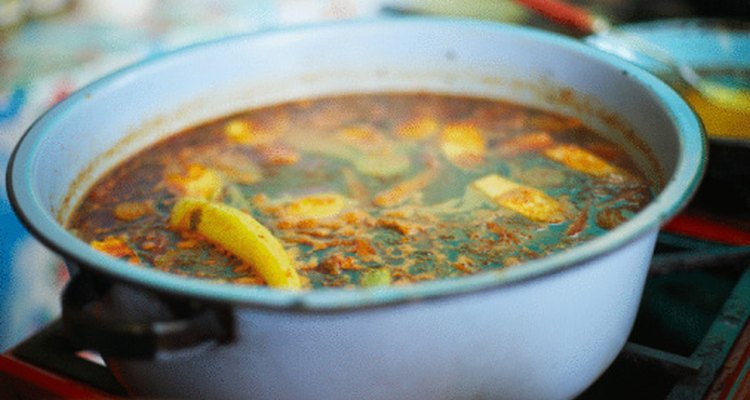
If you do not keep food hot when you eat it, you run the risk of getting food poisoning. Maintaining the temperature of food is not only important to the taste, but critical to food safety. Foods that cool into the danger zone below 140 degrees Fahrenheit are at risk of allowing food-borne illness pathogens to develop, according to the U.S. Department of Agriculture's food safety guidelines.
Insulated Beverage or Soup Containers
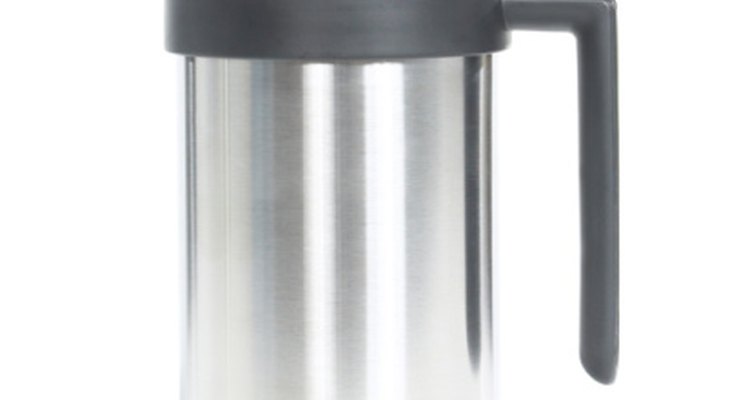
Insulated beverage containers, occasionally referred to by the brand name Thermos, are not just for drinks. Opt for a wide-mouth container for easier eating of the food inside. Preheat the container before adding the food. Pour boiling water into the container and cover. Leave the boiling water in the insulated container for at least 10 minutes. Pour the water out, and immediately transfer the food to the container. The food should be heated thoroughly. Liquid foods should be boiling, and more solid casseroles such as macaroni and cheese must be piping hot throughout.
Insulated Lunch Bags
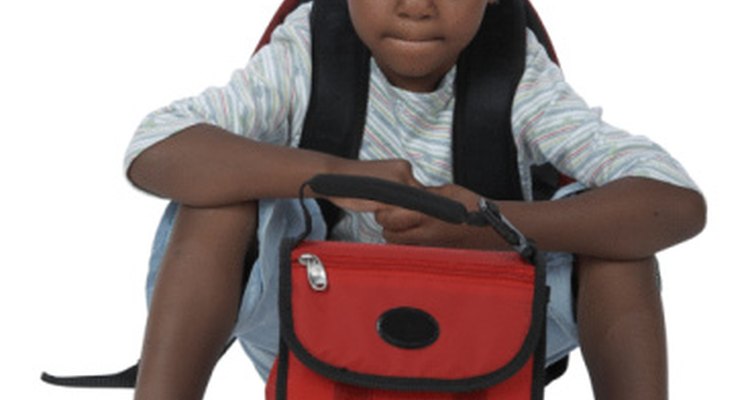
Look for the thickest insulation on the bag. Fill a low, plastic resealable container with boiling water and seal. Set this into the bottom of the insulated bag. Place a sealed container of the hot food on top of the boiling water container. The heat from the boiling water will rise and help to keep the food hot. Fill in any empty space in the insulated bag or cooler with crumpled newspaper. Close the bag and keep it closed until ready to serve the food. If the food will be served more than two hours after packing it, use a food thermometer to check the temperature. The food will still be safe to eat if the center of it registers at least 140 degrees Fahrenheit.
Slow Cooker
A slow cooker actively heats food when it is plugged in and is on, but the thick walls of slow cookers act as an insulator for keeping foods hot temporarily during transport. Pour the piping hot food into the slow cooker before you leave. Cover the slow cooker with the lid and seal the lid with duct tape to keep it in place during transport. Wrap a blanket around the slow cooker for trips lasting close to two hours or more. At your destination, remove the tape and lid. Test the food with a food thermometer and discard the food if it fell below 140 degrees Fahrenheit if it was more than two hours since it was cooked. Plug in the slow cooker and reheat the food to 165 degrees Fahrenheit over high heat. Stir the food every 15 to 30 minutes to keep it from burning. Switch the slow cooker to the low heat setting to maintain a temperature of at least 165 degrees Fahrenheit for serving.
Steam Table or Chafing Dish
Steam tables will not keep food hot in transport, but they maintain the temperature of cooked food for serving. A steam table uses a metal container of water heated from below with a sterno canister. As the water turns to steam, it heats the metal container of food above it. Chafing dishes are a variation of a steam table, but chafing dishes heat the metal container of food directly with sterno or alcohol burners. The food inside the steam table must be stirred every 15 minutes to keep it from burning. When not actively serving, the lid must be closed on the steam server to keep the heat from escaping the food.
Related Articles
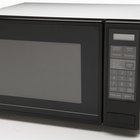
Can You Cook Something Frozen in the ...

The Difference Between a Chafing Dish & ...

How to Reheat Chinese Takeaway

How to Keep Ham Slices Warm for ...

The Steps in Cooking Raw Foods in a ...

What Are the Best Containers to Freeze ...
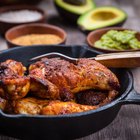
The Best Ways to Cook Hot Chicken Wings ...

How Long Can I Keep Food Safe in a ...
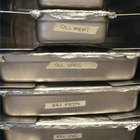
Catering Tips for Delivering Food

Size of a Steam Table Pan

How to Use a Probe Cooking Thermometer
How to Use a Hob Steamer
How to Hold Hamburgers in a Steam Tray

How to Cook With a Gas Fireplace

How Should I Store Hot Sandwiches for ...

Does Canned Soup Go Bad?

Can You Let Crock-Pot Meals Sit?

How Long Can Chinese Food Sit Out ...
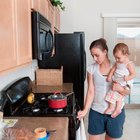
How to Boil Ziploc Bags

How to Vacuum Seal Jars
Photo Credits
Jupiterimages/Photos.com/Getty Images